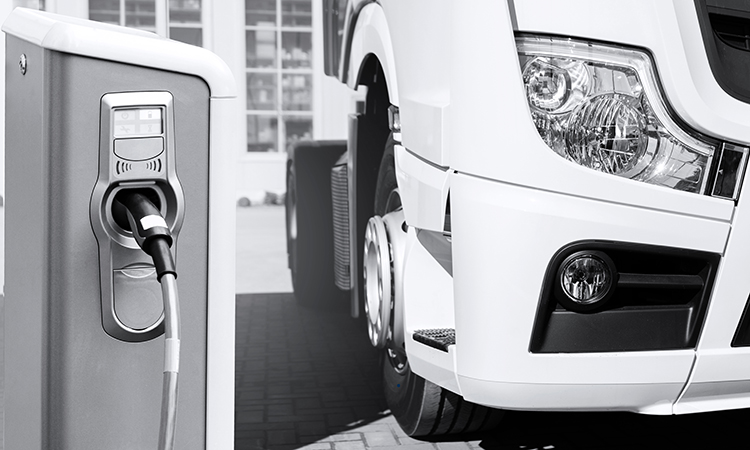Interview Spotlight: Philipp Grosse Kleimann, Siemens Advanta
- Like
- Digg
- Del
- Tumblr
- VKontakte
- Buffer
- Love This
- Odnoklassniki
- Meneame
- Blogger
- Amazon
- Yahoo Mail
- Gmail
- AOL
- Newsvine
- HackerNews
- Evernote
- MySpace
- Mail.ru
- Viadeo
- Line
- Comments
- Yummly
- SMS
- Viber
- Telegram
- Subscribe
- Skype
- Facebook Messenger
- Kakao
- LiveJournal
- Yammer
- Edgar
- Fintel
- Mix
- Instapaper
- Copy Link
Posted: 29 March 2022 | Philipp Grosse Kleimann - Siemens Advanta | No comments yet
Philipp Grosse Kleimann, Senior Vice President and Global Head of Automotive & New Mobility at Siemens Advanta, reflects on the current state of the electric vehicle industry and discusses how EV charging infrastructure challenges must be addressed in order to ensure their wider adoption, including through the provision of end-to-end solutions by OEMs.
There is currently a significant focus on shifting from petrol- and diesel-powered private vehicles to EVs in the consumer market. Do you think that we will see the same trend in the commercial vehicle market?
Looking at the two markets, we realise that, even though they work differently, there certainly are some similarities. Obviously, the change to electric vehicles in the consumer market happened due to various reasons, with sustainability and government subsidisation (especially in the European Union (EU)) at the forefront. These aspects only apply partially to the commercial vehicle market.
In our discussions with manufacturing companies, we see a clear preference to offset the carbon footprint of their individual fleets – this puts pressure on commercial vehicle Original Equipment Manufacturers (OEMs) to also provide adequate solutions. However, for commercial vehicles, the technological answer is not as straight forward as just shifting to electric, as hydrogen and other forms of power are also interesting alternatives. Beyond that, for commercial vehicle OEMs, it is not just about shifting to producing vehicles with alternative drives, but they also need to offer a high range of services on top, such as route planning, depot charging solutions and more.
Is the lack of charging infrastructure the main barrier to wider electric vehicle adoption, for both the B2C and B2B markets?
Yes, it plays a key factor, but it is not the only reason. The discussion about what comes first, the vehicle or the charging infrastructure, has been the central element of public and political discussions in recent years – boiling down to a classic hen-egg problem. Today, we see that car OEMs manage to create EV car offerings that attract the masses. What rightfully is missing now is the adequate charging infrastructure for private charging. Once it can be more convenient to charge, the adoption of private EVs will raise significantly. We expect to see this especially in bigger cities, where people cannot own their own wall charging boxes due to the lack of parking spaces and regulatory concerns with real estate owners.
But, if we start looking at the commercial vehicle market for EV trucks, we see that most of the trucks will be charged via depots (e.g. overnight) in the companies’ own locations. Most companies wanting to invest in upgrading their commercial fleet to EV trucks will also set up their respective charging depots. For these companies, the missing charging infrastructure is not the main barrier. It is more about ensuring that day‑to‑day operations continue to work smoothly, and that their goods can still be delivered without concern. Uptime is the key target. And, for this, consultation by the commercial vehicle OEMs towards their customers will be required, in order to make sure that the fleet is EV ready. We recently worked with one commercial vehicle OEM, creating a myriad of service solutions and offerings for exactly that question.


Once it can be more convenient to charge, the adoption of private EVs will raise significantly – particularly in bigger cities, where people cannot own their own wall charging boxes due to the lack of parking spaces and regulatory concerns with real estate owners.
Do you think that OEMs should begin to offer complete electric vehicle solutions, that include both the EV and the relevant charging infrastructure?
Yes, as just elaborated for the commercial vehicle OEMs, it will be key to convince their customers that trucks with alternative drivetrains will not jeopardise their performance levels in daily operations. When customers buy something ‘new’, something that they are not experienced in, they tend to appreciate a full‑service offering – i.e., an end-to-end solution. This means that, for commercial vehicle OEMs, it makes sense to establish an offering that not only sells the trucks, but also provides access to all of the required services, installations, maintenance and, potentially, operations of charging.
So, the offer needs to include the e-Truck itself, the charging solution and also cater for optimised operations of shipping companies for e-mobility. This can be consulting on when and how to electrify the fleet, software for intelligent charging management, dynamic route planning, etc.
But, of course, there is no need to do it alone; the great thing about the charging ecosystem is that there are already a lot of players that cover some parts of the value‑chain, with deep expertise and proven offerings for specific problems. OEMs do not need to offer the end-to-end solution by their own means, but can look for partnerships along the value-chain. This approach brings value to everyone: to the OEMs’ own offering, to the ecosystem partner, but, first and foremost, to the customer.
The same practice can also be applied in the B2C sector. From my perspective, many OEMs are still not leveraging the respective ecosystem enough. Each EV purchase should be accompanied by an OEM offering to at least also conveniently get access to charging (e.g., with a wall box installation or access to a charging network). In general, we expect service offerings to make up a significant future share of profit for OEMs going forward.


For commercial vehicle OEMs, it is not just about shifting to producing vehicles with alternative drives, but they also need to offer a high range of services on top, such as route planning or depot charging solutions.
Who should be responsible for deploying, owning and managing EV charging networks/stations?
For this, I would always answer from the perspective of the customer: whoever can create the best value for the individual customer and manages to bundle the most convenient offering. Therefore, it is hard to say who should be responsible, because it really depends on the customer and their preferences. Obviously, there are vast differences between B2C and B2B customers to consider, as well.
What we are currently seeing in the market is a playing field consisting of various business models for diverse players. The general trend in the automotive industry is that car and truck manufacturing OEMs want to grasp more parts of the overall value-chain. They expand horizontally into the charging market; for example, by starting to create wall box designs and driving opportunities like the IONITY network. In my general opinion, this is a legitimate approach, but decision makers should also consider that partnerships can be more attractive than do-it-yourself models. The ecosystem movement that we see and want to foster is to create even stronger partnerships between OEMs, Original Equipment Suppliers (OESs) and players at specific points in the industry. These partnerships can be built in a way to create customised end-to-end solutions for customers with the highest forms of value creation or to solve specific problems. A good example of a partnership that tries to solve the issue of missing high‑performance truck charging energy points close to highways is the joint venture of Traton Group (MAN+Scania), Daimler Truck and Volvo Trucks. They want to establish and operate 1,700 green charging points across Europe, with the means to create an open network for all in a second step through collaborating with the European Union.
What does the future look like for the electric vehicle industry, and are the necessary charging infrastructures set to become more accessible?
In general, the future for the electric vehicle industry looks great. With more and more countries establishing goals for internal combustion engine (ICE) phase-outs – such as Norway in 2025; Denmark, Ireland, the Netherlands and others in 2030; and Europe aiming for a full phase-out in 2035; with even China aiming for only electrified car sales in 2035 – the future looks very bright, with various opportunities and more playing fields to come. Therefore, I am fairly confident that the industry will foster that change. But, the question we have to ask the OEMs is this: is producing electrical vehicles enough? Let me answer that: I think that it’s not enough. I think that e-mobility is an ecosystem, and it requires a systematic approach going forward. There are still significant issues to be figured out, such as the sustainable option for second life of batteries, the higher demand for energy and convenient access to charging. Over time, home charging will become less relevant, and we will see a shift towards public and workplace charging, especially for private car owners. So, this is a call to all businesses and employers to think ahead and prepare for large-scale changes coming up!
Philipp Grosse Kleimann is a Senior Vice President at Siemens Advanta Consulting, acting as Global Head of Automotive & New Mobility. In his role, he supports clients within Siemens and beyond in finding their way through the transformation of the industry, addressing digitalisation, electrification, automation and sustainability. Being a ‘car guy’, he combines expertise from the industry with strategy consulting skills – having served at Mercedes-Benz, Aston Martin, Munich Re and Roland Berger earlier.
About the company
Siemens Advanta is the professional service arm of Siemens, enabling companies to unlock the digital future by offering end-to-end support on their unique digitalisation journey. A key differentiator of Siemens Advanta is the unrivalled combination of deep domain knowledge, the strong Siemens technology stack and a powerful ecosystem of partners around the globe.
Related topics
Alternative Power, Business Models, Fleet Management & Maintenance, Infrastructure & Urban Planning, Sustainable Urban Transport
Issue
Issue 1 2022
Related modes
Electric Vehicles (EV)
Related organisations
Siemens Advanta
Related people
Philipp Grosse Kleimann








